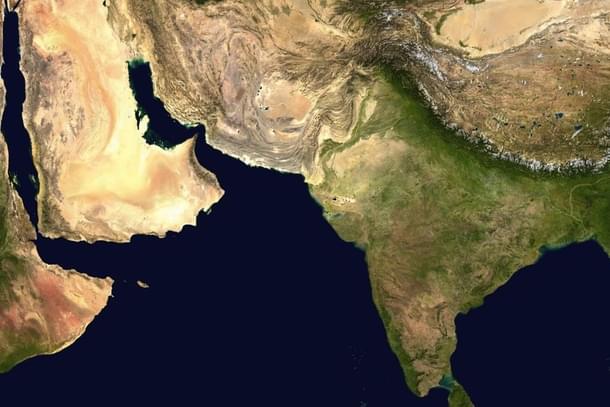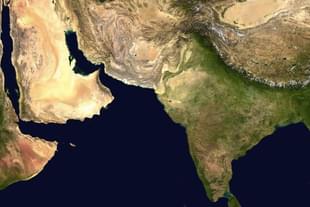Politics
'South Asia’ Versus The ‘Subcontinent’: The Label Wars
Venu Gopal Narayanan
Jul 08, 2021, 07:34 PM | Updated 07:34 PM IST
Save & read from anywhere!
Bookmark stories for easy access on any device or the Swarajya app.


Once upon a time, there was a land called Sapta Sindhava. Its core was centred on seven rivers. In some ancient lists, these rivers were the fabled five of Punjab, plus the Kubha and the Suvastu (the Kabul and Swat rivers). In others, they included the now-dry Saraswati and the Indus, or the Yamuna, the Ganga, or the Saryu.
With time, geographies expanded, and names changed. Annals like the Puranas used the terms Bharata Varsha. The Greeks called it Indos. The Persians called it Hindustan. The Mauryans called their world Jambudwipa (Sasaram minor rock edict). In the epics, this was Aryavarta. The list of rivers kept changing too. But by and large, whatever the prevailing toponym, it was one name used to define a region confined by high mountains and vast oceans, within which dharma prevailed.
Then, the British arrived. They spelt it formally as I-N-D-I-A, from the old Latin, by which the possessive noun of this land they conquered became the ‘Indian subcontinent’. And that is how matters remained for some centuries, until a new force embarked upon a new conquest late last century, to unilaterally rename the region as ‘South Asia’.
It shouldn’t have mattered; after all, the old Chinese name for the subcontinent was ‘Tianzhu’, which the Japanese adopted and adapted as ‘Tenjiku’. And it wouldn’t have mattered, but for the insidious identity politics which propelled this name change. It is the other war being fought, in the domain of the mind, and it must be known for what it is, if we are to not slip unwittingly into prisons built of labels.
Readers of a certain age would remember that the papers often reported on ‘Indological seminars’. Yet today, academicians congregate to discuss ‘South Asian studies’. What happened to Indology then, and where did the subcontinent disappear to?
Cab Calloway’s memorable introduction of the Blues Brothers show band and revue in 1980, at the Palace Hotel Ballroom north of Chicago, is another case in point. Diplomatically seeking to paper over Jake and Elwood Blues’ absence from the R&B scene, due to incarceration and stifling penury, Calloway instead fibs to the crowd that the musicians were in fact away on an extended three-year tour of Europe, Scandinavia, and the subcontinent. No qualifiers, no explanations; just one word – ‘subcontinent’ – was enough for the crowd to conjure images of a lengthy, Beatle-esque sojourn in exotic India.
This is not semantics. The name change is part of a systematic effort undertaken since the 1980s to re-label, and thus re-define, regions with fresh identities so that they may be taken out of their traditional, historical, and civilizational contexts.
A formal move away from the subcontinent, and a relocation in South Asia was, in this writer’s opinion, impelled by the late American political scientist and self-styled strategic affairs expert Stephen P Cohen. It is probably he who popularized the new descriptor.
This was actively taken up by Foggy Bottom (the headquarters of the American foreign service in Washington DC), who swiftly realized the merit of new labels.
In the swirling mayhem of a rapidly-changing post-Soviet world, when fresh identities were crafted with the speed of McDonald's burgers to feed fresh conflicts, replacing the 'subcontinent' with 'South Asia' had multiple advantages.
The Pakistanis, ever in search of a new identity, had always chafed at having to remain a part of the Indian subcontinent, even after partition. It negated any efforts to fashion a fresh history insulated from that idolatrous breed they had broken away from. 'South Asia', then, offered them a convenient origo, or foundational starting point, on which a new history could be written. And with Pakistan being the belle of the ball, courtesy the land access it offered to Afghanistan and Central Asia, a mighty media machine was only too willing to comply.
But it is not just Pakistan or its new identities; this new nomenclature went a lot deeper. Votaries of 'an idea of India', steeped in postmodernist subaltern studies, realized that a novel naming of an ancient land aided tremendously in narrative-building. Using 'South Asia' instead of the 'subcontinent' allowed them to apply frankly preposterous pseudo-scientific theories of linguistics, like deietics, to compose new histories. This approach of contesting text to change context and thereby incusing radical notions into prevalent thinking was so assiduously followed that soon enough, public discourse came to be filled with a solitary descriptor – South Asia.
The advantage is that it allowed one to wipe the slate clean and even to replace that slate with an empty canvas, upon which eager artists from academia could now paint a fresh portrait of new lands. 'South Asia' was the hook upon which 'an idea of India' was hung, and it made perfect sense. If Pakistan came into existence only in 1947, then so did India. The past didn't exist (and if at all it did, then it could now be tweaked and selectively couched in the language of class and caste wars). And once that was effected, then all of history could be rewritten at one's sweet will.
Think about this from an ideological standpoint: isn't it so much easier to ensnare and mould a pliant young mind if the old links are broken first, and a vacancy of thought created? The forced popularisation of 'South Asia' over all other toponyms, including 'Bharata', was, thus, a key tool in breaking links with the past. Someone somewhere astutely understood that peddling atheism alone wasn't enough in the East, where a non-Abrahamic existence drew moral, spiritual and cultural sustenance as much from its history and geography as it did from a deity. East of Arabia, religion isn't the only opium of the masses; a civilizational ethos and a sacred geography too, join the list. And what better way to change that than by going to the root and changing the descriptor itself?
That is how things have remained for decades now. Indeed, matters have reached such a deplorable level that, today, Pakistani columnist Mosharraf Zaidi can’t even lament the passing of Dilip Kumar without putting ‘India’ within quotation marks.
Dilip Kumarâs passing feels like the closing of a chapter in which a kid from Peshawar could grow up to be beloved across time, space and âIndiaâ.
— Mosharraf Zaidi (@mosharrafzaidi) July 7, 2021
I donât think it is whimsical at all, to lament the fading away of the kind of possibilities that existed then & donât now. ð
What Zaidi sought to convey through his tweet was that Dilip Kumar was tremendously popular in Pakistan too. But see how ridiculously hard he has to struggle, merely to define something as innocuous as a geography broader than the current international boundaries of India. The fact is that Dilip Kumar was born in Peshawar before the partition, shifted to Bombay (more labels), and died in Mumbai as a legend. That means he was born in India and died in India.
But Zaidi can’t say that without using quotation marks because to do so brings up a history, which his ilk in ‘South Asia’ have tried long and hard to bury. That is how deeply ingrained the label wars have become, and it is driving Indians to the wall. And it is this same postmodernist revisionism, which lets a Stanislaus Lourdusamy become ‘Father Stan Swamy’, or converts ‘international law’ into a ‘rules-based order’.
Now, if the old term hasn’t been fully expunged yet, it is because ‘subcontinent’ remains in regular use in geology; plate tectonics continues to call that rogue landmass, which broke away from the supercontinent of Gondwana in the Mesozoic era and drifted northwards to cause Himalayan mayhem on three continents, as the ‘Indian subcontinent’. Still, efforts are actively on, to popularize the ‘geology of South Asia’. Maybe if we give them time, they’ll end up calling our sacred landmass the ‘Potwar Plate’, or the ‘Deccanese micro-continent’, or something; just anything, but the ‘Indian subcontinent’.
So what is the way forward?
The only way to contest an ideology which places such supreme emphasis on text and context, with such admittedly widespread success, is to reject these unilateral baptisms – especially when we now know that there is nothing benign about the nomenclatures being imposed by that nomeklatura.
A useful starting point would be in government, where the ‘Indian subcontinent’ has been systematically replaced by ‘South Asia’, almost like an article of faith. Our political leadership would do well to realise that names mean everything and that they must be used with care.
Until then, it is up to the average Indian to increasingly accept that the more people plug ‘South Asia’, the more they legitimise partition and all its attendant divisiveness. Sapta Sindhava can be called Indos, or Tianzhu, but not ‘South Asia’. That is the power of the word.
Venu Gopal Narayanan is an independent upstream petroleum consultant who focuses on energy, geopolitics, current affairs and electoral arithmetic. He tweets at @ideorogue.





